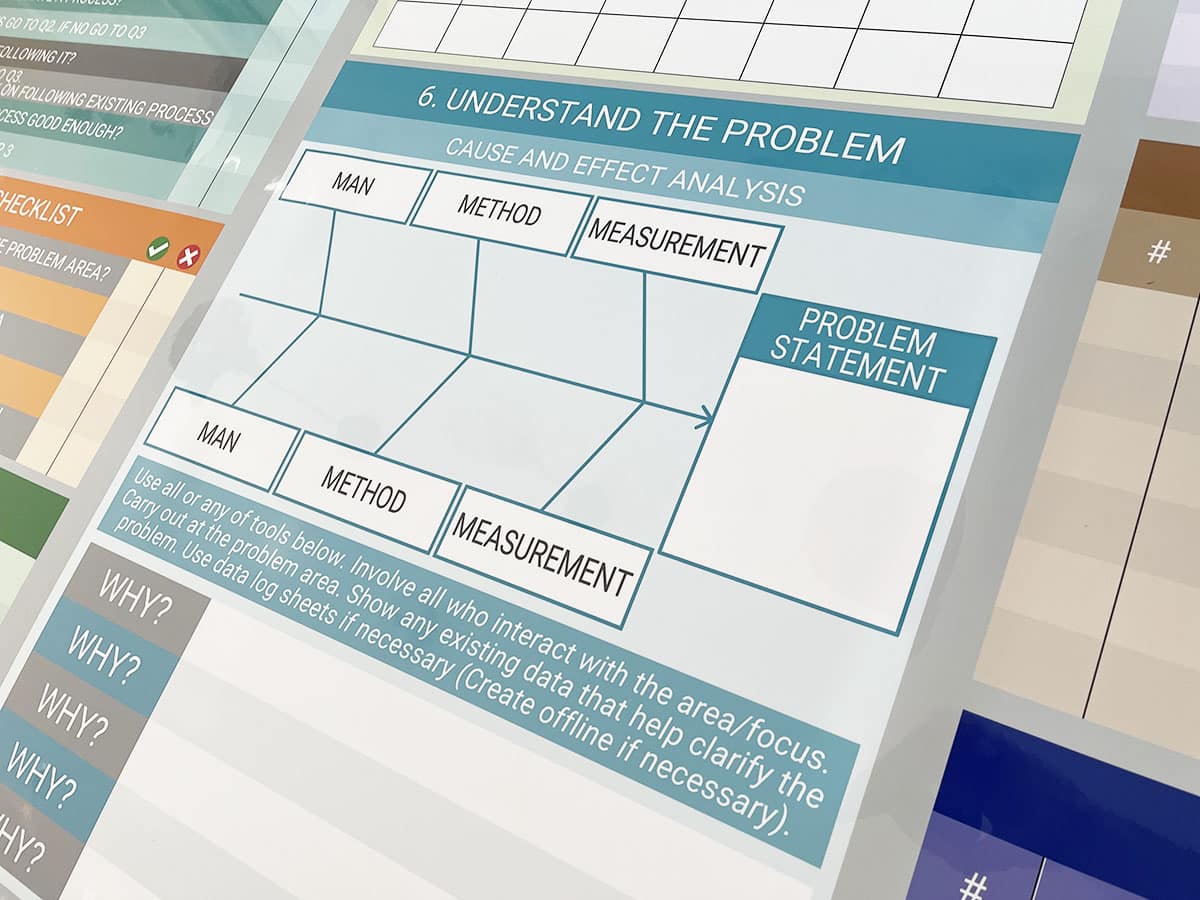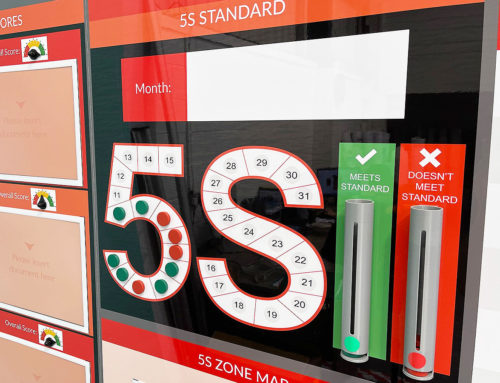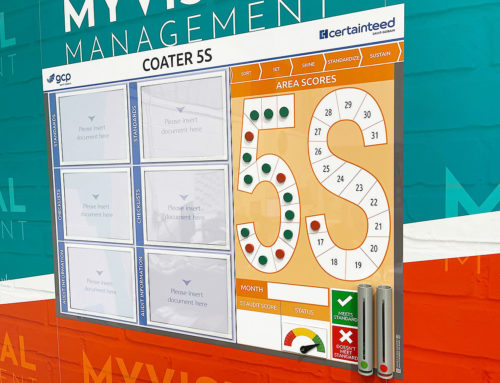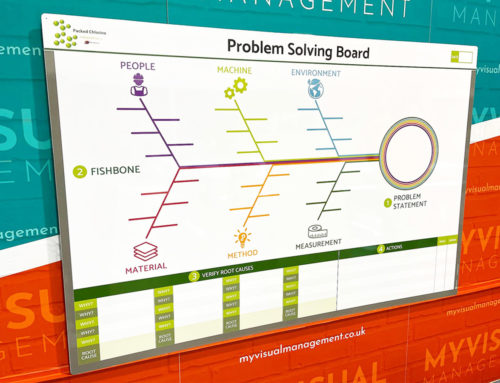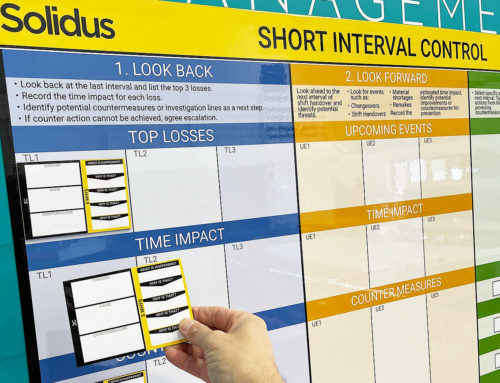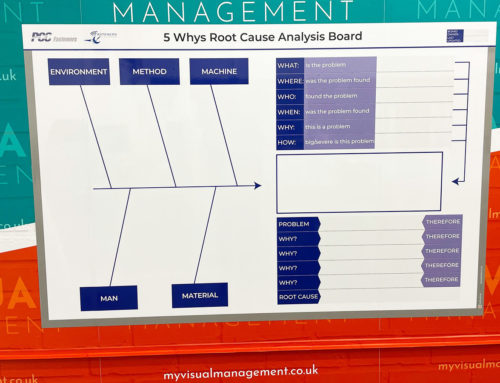Discover how visual problem solving works. Furthermore, see relevant problem solving boards. Above all, understand key problem solving strategies and make the process visual and accessible. Here is how…
Visual management is highly effective for problem solving strategies
How visual problem solving works by strategy
PDCA cycle
Lean strategy
This incremental change management model has four steps:
- Plan the change
- Do – implement the change
- Check results
- Act on lessons you learn
A3 Problem Solving
Lean strategy
A collaborative problem solving method for the team. Traditionally, on an A3 size piece of paper. Now, however, very effectively translated into a problem solving visual management board.
DMAIC
Six sigma strategy
This methodology has six steps:
- Define the problem
- Measure performance
- Analyse relevant information
- Improve processes
- Control – in other words, implementation of controls
5 WHYS
Six sigma strategy
The 5 Why strategy is often implemented in the Analyse stage of DMAIC. In short, keep asking why? Until you reach the root cause of the issue that needs to be tackled.
RCA
Six sigma strategy
Root Cause Analysis is one of the most fundamental problem solving methodologies. It is particularly relevant for understanding problems that have already occurred.
Fishbone
A further tool for Root Cause Analysis. Often covers 5Ms or similar. For example, Personnel, Machine, Materials, Methods and Measurement.
Further ideas for how visual problem solving works
Please view this problem solving board gallery
Further examples
Our Approach
We create visual management boards everyday. As a result we have plenty of experience. We work for organisations in food production, the power industry, national rail, pharmaceuticals, education, healthcare, packaging and distribution.
Our team works with a simple idea or sketch and creates a professionally designed layout. This is then turned into a highly functional visual management board.
We offer customised options because we want to create the perfect board for you. So, here are a few examples. We can add magnetic areas or a dry-wipe finish (for use with whiteboard pens). Furthermore, you can choose Red/Green sliders or R.A.G. (Red, Amber, Green) status dials so you can quickly and visually update your board. These are just a few examples of the ways in which our boards can be tailored to meet your needs. You may also be interested in whiteboard overlays that can be used on top of an existing magnetic board.
























































